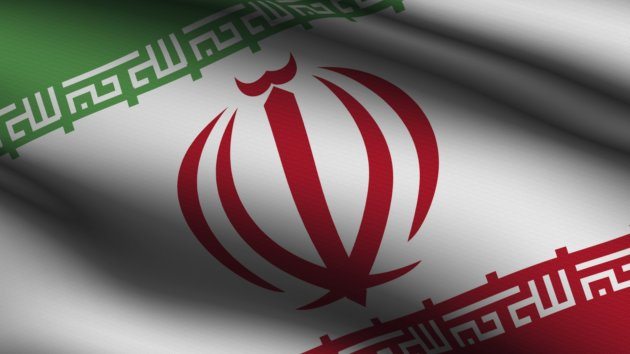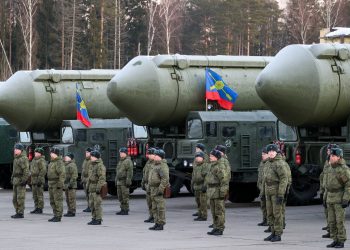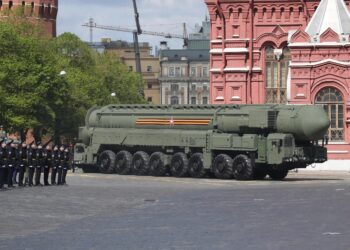Global powers on Sunday were narrowing in on a deal to stop any Iranian bid to develop nuclear weapons, with diplomats saying some key parts of an outline had been tentatively agreed.
The “framework” accord — no one knows how detailed it will be — is meant to be fleshed out into a comprehensive agreement by June 30 to end over a decade of tensions with the Islamic republic.
Here are the possible contours of such an agreement, which Iran and the so-called P5+1 — Britain, China, France, Germany, Russia, and the United States — have been negotiating since late 2013.
The goal:
To reach a verifiable comprehensive agreement that limits Iran’s ability to harness enough fissile material to build a nuclear bomb.
Breakout time:
World powers want to cut Iran’s ability to build an atomic weapon to a “one-year breakout time.” That would mean Tehran would need at least 12 months to be able to produce enough material for a nuclear bomb.
The assumption is that the international community would have enough time to detect such a move — and could seek to strike or destroy the facilities.
This year-long breakout time would stay in place for the length of the deal. Officials said Sunday that they were homing in on a 15-year duration for any deal, but stressed that different elements would be subject to a variety of deadlines.
Enrichment:
This is one of the trickiest issues. Several years ago, the international community wanted to deny Iran any capability to enrich uranium.
In April 2006, Iran launched a process to enrich uranium to 3.5 percent. By February 2010, Iran had the ability to enrich to 20 percent, giving it the possibility of moving quickly to 90 percent — the level needed for a bomb.
Iran currently has about 19,000 centrifuges. About 10,200 centrifuges are in operation, used for spinning uranium gas at supersonic speeds to make it suitable for power generation and medical uses but also, at high purities, for a bomb.
Diplomats told AFP there had been tentative agreement that Iran would slash the total number of its centrifuges by about two-thirds, to about 6,000.
Sanctions:
Iran has publicly said it wants all sanctions imposed by the US, European Union and United Nations to be lifted. But world powers have refused, talking instead about a phased, gradual easing of the measures. Experts say untangling the sanctions — from those also imposed for Tehran’s alleged terror activities for example — was proving to be one of the most difficult tasks.
A senior US official said all parties, including Iran, had agreed there should be a phased, step-by-step, reciprocal approach. There is still disagreement on the formula to be adopted.
Sanctions relief would be staggered and linked to certain “milestones” by Iran over the lifetime of the deal.
Research and development:
Certain Western negotiators say the limits on highly enriched uranium mean nothing if the agreement does not take into account the technological progress made by Iran. A US official said Sunday research and development remained one of the biggest areas of contention.
Iran’s nuclear chief Ali Akbar Salehi has said the deal would not stop Iran “continuing with force” the development of more powerful and modern centrifuges.
Nuclear plants:
Any deal will have to lay out what nuclear sites Iran would be allowed to maintain. The US does not want Iran to be allowed to develop weapons-grade plutonium at its unfinished Arak reactor.
Plutonium can be used as an alternative fissile material to highly-enriched uranium.
Iran should also not use its Fordo nuclear plant to enrich uranium, which would leave only its Natanz plant capable of enriching uranium.
Diplomats have told AFP that the virtually impregnable underground Fordo facility near the holy city of Qom would cease uranium enrichment, hinting it would remain open for other purposes such as medical research.
Monitoring:
A tough inspection programme using UN watchdog the IAEA, the International Atomic Energy Agency, is a cornerstone of any deal. The US bottom line is that Iran must agree to unprecedented inspections of both nuclear and production facilities as well as uranium mines and mills.
Getting a clean bill of health from the IAEA depends in large part on movement in its stalled probe into allegations, mostly before 2003, that Iran’s programme had “possible military dimensions”.
Statement or declaration?
US officials say they have not decided what form any announcement would take, whether it will be a written statement or just a declaration. But they concede some of the top lines of any understanding would have to be publicly communicated.










